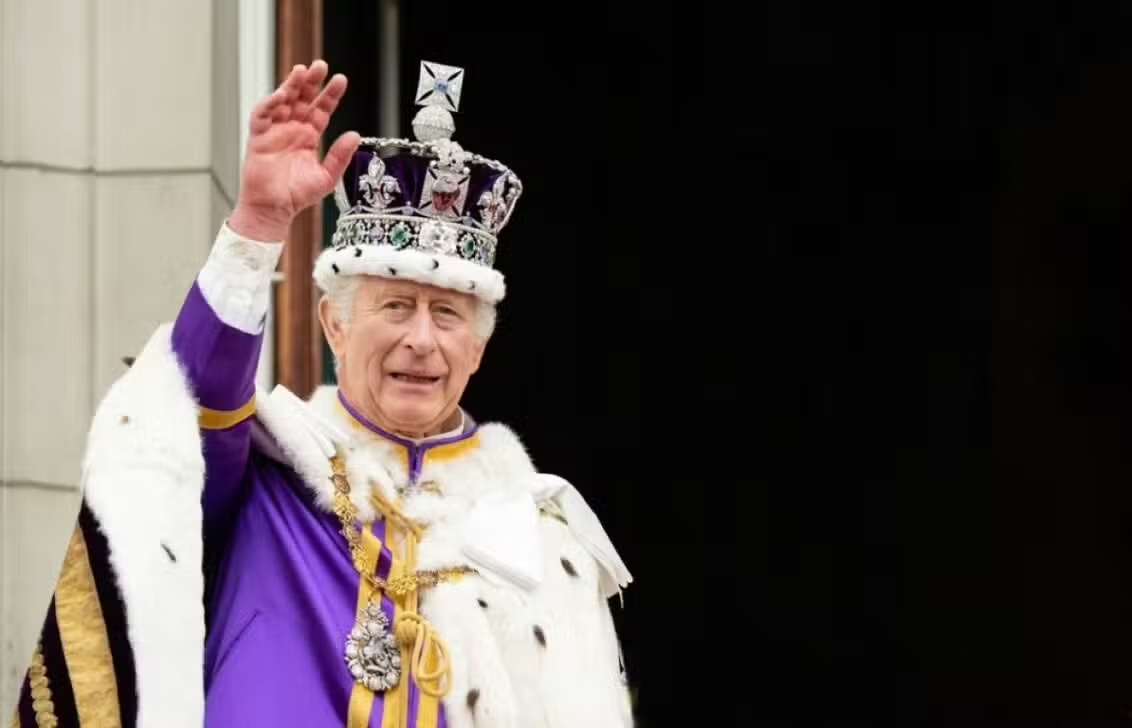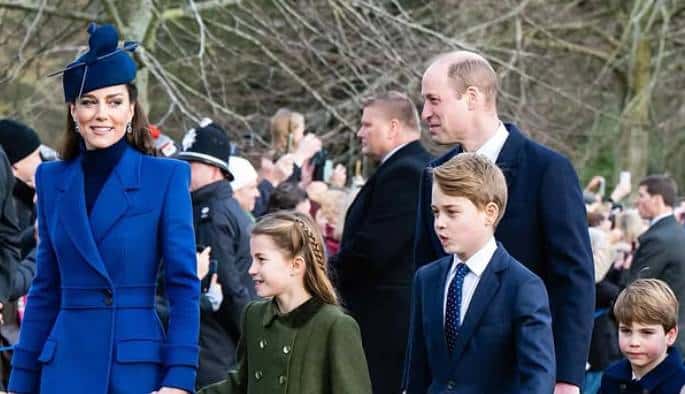Share
Tweet
Share
Share
In February 2024, Buckingham Palace announced that King Charles III was diagnosed with cancer during a procedure to treat benign prostate enlargement. At 75, the monarch immediately began treatment, adjusting his schedule to focus on his health. Although his public appearances have decreased, Charles remains dedicated to his role, performing administrative and consultative duties privately. His resilience reflects his unwavering commitment to duty, even during challenging times.
The transparency of the announcement regarding Charles III’s health garnered widespread solidarity from the British public, strengthening support for the monarchy. Queen Camilla, by the king’s side, has played a vital role in ensuring that the transition of responsibilities proceeds smoothly and efficiently.
Kate Middleton’s personal triumph
At the start of 2024, Kate Middleton, the Princess of Wales, faced her own health challenge with a cancer diagnosis following a planned abdominal surgery. At 42, Kate underwent intensive treatments that temporarily pulled her away from royal duties. Recently, she announced her recovery, declaring herself cancer-free and gradually resuming her public engagements with renewed vigor. Her personal journey has further deepened her connection with the public, who admire her resilience and dedication.
Kate’s recovery symbolizes not only individual strength but also the continuity of the monarchy’s commitment to its duties. Her gradual return to royal engagements has been a source of reassurance and stability during a time of transition.
William and Kate take on new roles in the monarchy
Amid these health challenges, Prince William and Kate Middleton have significantly increased their presence in public events and royal responsibilities. Their preparation for the throne is evident in their active participation in charity visits, diplomatic meetings, and national ceremonies. This growing involvement underscores a strategic transition within the monarchy, ensuring that traditional values are preserved while addressing the evolving needs of modern society.
 Muhammad Aamir Sumsum/Shutterstock.com
Muhammad Aamir Sumsum/Shutterstock.com
William, groomed from a young age to assume the role of monarch, is increasingly stepping into leadership roles. He has represented his father at major events, including the recent reopening of Notre-Dame Cathedral in Paris. Meanwhile, Kate continues to balance royal traditions with a modern approach, solidifying the royal family’s image in the public eye.
Public support for the couple and royal transition
The British public has shown overwhelming support for the couple during this period. Recent polls indicate that over 70% of Britons trust William and Kate to lead the monarchy in the future. Their consistent presence at official engagements, despite personal challenges, reinforces a sense of stability and continuity within the institution.
William and Kate have also embraced modern strategies to strengthen their connection with the public, particularly through the strategic use of digital platforms. By sharing personal and professional moments on social media, they have fostered a closer relationship with younger generations, ensuring the monarchy’s relevance in a rapidly changing world.
Modernization and tradition: balancing the future
One of William and Kate’s standout qualities is their ability to balance tradition and modernity. Under their influence, the monarchy has adopted more inclusive and accessible practices without compromising its core values. They have prioritized contemporary causes such as environmental sustainability, mental health, and early childhood education, demonstrating how the monarchy can act as a positive force for social change.
Modernization efforts extend to areas such as dress protocols and interactive public engagements. This combination of respect for tradition and a willingness to innovate has helped build a refreshed image for the British monarchy.
Recent events showcasing the couple’s leadership
In recent months, William and Kate have participated in several significant events that highlight their commitment to the UK and the Commonwealth. These include visits to educational and healthcare institutions, emphasizing the importance of social projects benefiting local communities.
During a recent trip to northern England, the couple inaugurated a series of community initiatives focused on mental health and well-being. These actions are part of a broader strategy to connect the monarchy with the public in a practical and empathetic way, laying the groundwork for an inclusive and innovative reign.
The global impact of the British monarchy
Beyond their roles in the UK, William and Kate play an important role on the global stage. As representatives of the monarchy, they have strengthened diplomatic ties and promoted British interests abroad. Their efforts also include spotlighting urgent global issues, such as the climate crisis, during international events.
The couple’s engagement in global causes reinforces the idea that the monarchy, while steeped in tradition, can serve as an agent of positive change worldwide. This approach underscores the institution’s relevance in an increasingly interconnected world.
The monarchy’s future under William and Kate’s leadership
Experts believe William and Kate’s reign will usher in an era of renewal and innovation. Issues such as climate change, social inclusion, and mental health are expected to take center stage under their leadership. The couple’s ability to balance tradition with modernity is viewed as a critical strength in ensuring the monarchy’s continuity in a constantly evolving world.
William’s strategic and pragmatic approach, coupled with Kate’s warm and diplomatic demeanor, has already demonstrated their capacity to navigate the complexities of leadership. Both the British and international public watch with anticipation as their roles within the royal family continue to evolve.
Data highlighting confidence in the transition
Numbers illustrate William and Kate’s growing responsibilities within the monarchy. In 2023 alone, the couple attended more than 250 official engagements, and this number is expected to increase in 2024. Their international presence has also solidified their image as global leaders.
The combination of high engagement levels and a strategic communication approach, particularly through social media, has endeared them to younger audiences. These generations see William and Kate as symbols of transparency and accessibility, vital qualities for maintaining the monarchy’s relevance.
William and Kate: a couple prepared to lead
From an early age, William was trained for the role of monarch. His military background and philanthropic efforts have shaped a leader who embodies discipline and empathy. Kate, on the other hand, has captivated the public with her ability to connect with people from diverse backgrounds, establishing herself as a modern and approachable queen consort.
Together, the couple has shown they are prepared to lead, even amid challenging circumstances. Their actions reflect a steadfast commitment to both continuity and modernization, ensuring the monarchy remains a central pillar of British society and beyond.
Insights into Kate Middleton’s role
Kate Middleton is celebrated for her dedication to social causes, such as child health and basic education. Her warm demeanor at official events endears her to the public, and her ability to blend royal traditions with contemporary practices strengthens her position as the future queen consort.
Kate’s attention to detail during royal engagements reflects her deep understanding of royal expectations and the needs of the communities she visits.
Prince William’s global outreach
William’s global initiatives have also gained significant attention. He has used his platform to raise awareness of critical issues, such as climate change, through projects like the Earthshot Prize, which rewards innovative solutions to environmental challenges.
This global focus reinforces the monarchy’s role as a bridge-builder in addressing issues that affect humanity, underscoring its importance on the world stage.
Challenges faced by the monarchy in 2024
The year 2024 has presented unprecedented challenges for the British monarchy. Health concerns for both King Charles III and Kate Middleton, along with William’s increased responsibilities, have tested the institution’s resilience.
However, the royal family’s strategic response has drawn widespread praise. Their ability to adapt to changing circumstances while maintaining continuity of service reflects the strength of the monarchy.
The impact of social media on the monarchy’s image
Social media has become a crucial tool in modernizing the royal family’s image. William and Kate have effectively used these platforms to share personal insights and highlight important causes, creating a more direct connection with the public.
This approach has been particularly successful in engaging younger audiences, who value transparency and accessibility in public figures.
Expectations for the coming years
With King Charles III undergoing recovery and Kate Middleton resuming her activities, the future of the monarchy appears to be in capable hands. William and Kate continue to demonstrate leadership and dedication, preparing for the challenges and opportunities that lie ahead.

